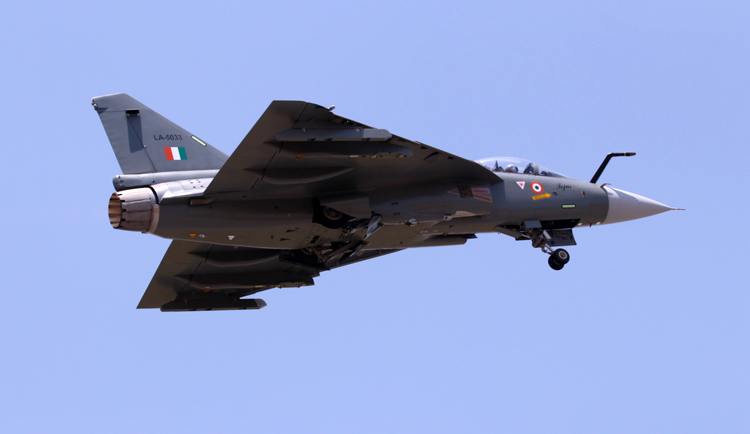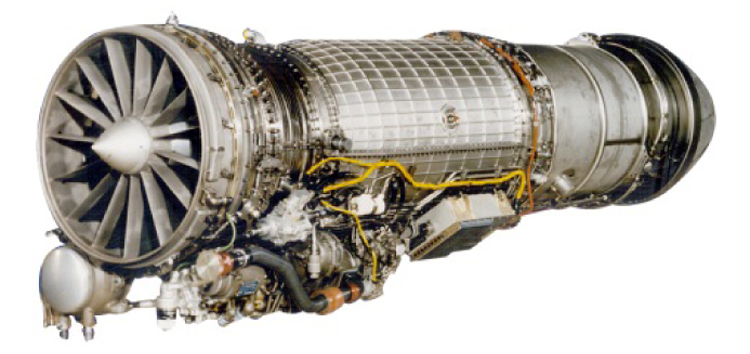The primary delay in delivering the Tejas Mk1A jets is due to General Electric (GE) not supplying the F404-IN20 engines, which are needed to power the aircraft
 |
The Author is Former Director General of Information Systems and A Special Forces Veteran, Indian Army |

Successful First Flight of LCA Tejas Mk1A
The Indian Air Force (IAF), grappling with depleting numbers of fighter jet aircraft, has come to realise that the scheduled delivery of the indigenous Tejas Mk1A aircraft will not happen on time. Hindustan Aeronautics Limited (HAL) was to deliver 16 x Tejas Mk1A fighters to the IAF in 2024 but none have been delivered so far.
HAL has said the first Tejas Mk1A fighter aircraft would be delivered by November this year. The IAF, however, hopes that the delivery would start at least by end 2024. Media quoted an unnamed IAF source who said, "We know that 16 aircraft will not come in this fiscal as per contract. We hope HAL is able to deliver at least eight aircraft."
When the Light Combat Aircraft (LCA) programme was initiated in 1983, the plan was to unveil the first aircraft by 1994. But the prototype of the LCA flew only in 2001, 18 years after the project started. In December 2013, Tejas got initial operational clearance and in 2019, the IAF was given the first aircraft with final clearance. Speculation is that HAL may not be able to deliver the Tejas Mk1A according to its revised schedule, delays being the norm in all projects of the Defence Research and Development Organisation (DRDO).
Hindustan Aeronautics Limited (HAL) was scheduled to deliver 16 Tejas Mk1A fighter jets to the Indian Air Force (IAF) in 2024, but none have been delivered so far
In developing the Tejas Mk1A, HAL is still grappling to streamline issues like standardisation and software iterations along with likely smaller design shifts. For similar reasons, an earlier order of 10 x Tejas Trainer Aircraft to HAL was also delayed with only five being delivered so far and one taken back for further trials.
According to HAL, the main delay is that US firm General Electric had not supplied any F404-IN20 engine that is to power the Tejas Mk1A. In February 2021, the Ministry of Defence (MoD) signed a ₹48,000 crore deal with HAL for 83 Tejas Mk1A. Later in August 2021 HAL signed a $716 million deal with GE Aviation for 99 F404 aircraft engines and support services for the Tejas Mk1A. As per contract, three Tejas Mk1A were to be delivered to the IAF in February 2024 and 16 aircraft per year for subsequent five years.

LCA Tejas Mk1A UPON COMPLETION OF FIRST FLIGHT
In addition to the 83 x Mk1A aircraft on order, MoD has given preliminary approval for procuring another 97 x Tejas Mk1A. This would eventually make 180 x Tejas Mk1A fighter jets and 220 fighter jets of the Mk1 variant. The combined cost of the 180 Tejas Mk1As is an estimated ₹1.15 lakh crore.
In end-June 2024, a GE Aerospace spokesperson said, "The aerospace industry continues to experience unprecedented supply chain pressures. GE Aerospace is working with our partner HAL and suppliers to resolve constraints and deliver F404-IN20 engines." According to the contract, GE was to deliver 16 x F404-IN20 engines by September 2024. However, according to a government official not a single engine has been received yet.
Despite US officials and the US Ambassador to India raving that the GE F404-IN20 engines being provided to India with 100 per cent transfer of technology (ToT), US is unlikely to share critical technology of the inner core of the engine
HAL has come up with an alternate plan to install used engines on the initial batch of jets as an interim measure. The IAF is also reportedly involved in this process; using Category-2 or used engines as temporary measure till the new GE engines arrive. Nothing more on the issue is known.
According to an analysis published in April 2024, "Since 2020, original equipment manufacturers (OEMs) have struggled to obtain adequate quantities of many components essential to aircraft manufacturing, including raw materials, finished castings and forgings, semiconductors, and electronics components. In consequence, production lines have slowed or stopped." A major reason is the US-led NATO war on Russia using Ukraine as its proxy, plus US-EU sanctions on Russia and China - leading to supply chain constraints; raw material shortage, component shortage, semiconductor and electronics shortage.

GE F404-IN20 engine
The above is despite US officials and the US Ambassador to India raving that the GE F404-IN20 engines are being provided to India with 100 per cent transfer of technology (ToT), which itself is suspect because the US is unlikely to share critical technology of the inner core of the engine, going by its past history. All this proves once again that the US is a very unreliable partner, who has also backstabbed India once again by engineering the regime change in Bangladesh. It also underlines the need to accelerate indigenous aero engine development.
For the IAF this delay is bad because Tejas fighters are going to constitute bulk of the IAF in the next few decades and key to arresting the fighter squadron strength from going below 30 squadrons in the near term. By next year, the remaining two MiG-21 Bison squadrons will also be phased out to make way for the new Tejas aircraft, particularly at bases which are largely empty.
The more capable Tejas Mk-2 is also under development which will be powered by the GE F414 engines. A deal for licensed manufacture of the F414 engines in India is in advanced stages.
According to government officials, manufacturing Tejas fighter jets is continuing at HAL and while there were other supply chain issues, the primary hold up is the engine delay. Even if some number of engines is delivered in the next few months, a small batch of Tejas Mk1A fighter jets can be delivered within a short timeframe? But these claims need to fructify on ground to be believed.
In addition to the Tejas Mk1A, the more capable Tejas Mk-2 is also under development which will be powered by the GE F414 engines. A deal for licensed manufacture of the F414 engines in India is in advanced stages. As of now, the IAF has committed to procuring around 120 Tejas Mk-2.

GE F414 engine
According to news reports of August 10, 2024, the Secretary DDR&D and Chairman DRDO along with Deputy Chief of Air Staff took a high level review meeting of Tejas Mk-2, with all stakeholders in the development programme in attendance. The meeting laid down targets towards realisation of the first fly worthy prototype of Tejas Mark 2, an upgraded version of the existing Tejas Mk1A, having a wider array of weapons and a more powerful engine. Tejas Mk-2 will reportedly have 17-tonne all-up weight compared to 13.5 tonnes of Tejas Mk1A.
The latest is that the US has okayed transfer of technology of about 80 per cent of the GE F414 engine; not 100 per cent which includes critical and restricted technologies like crystal blade coating, laser drilling and polymers like to name a few. The US, France, the UK and Russia have these elusive technologies. But the wait continues for the GE F414 engines.













